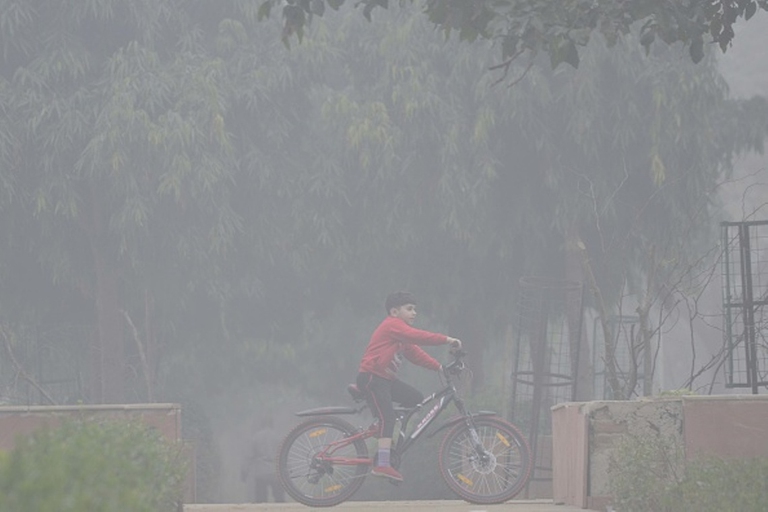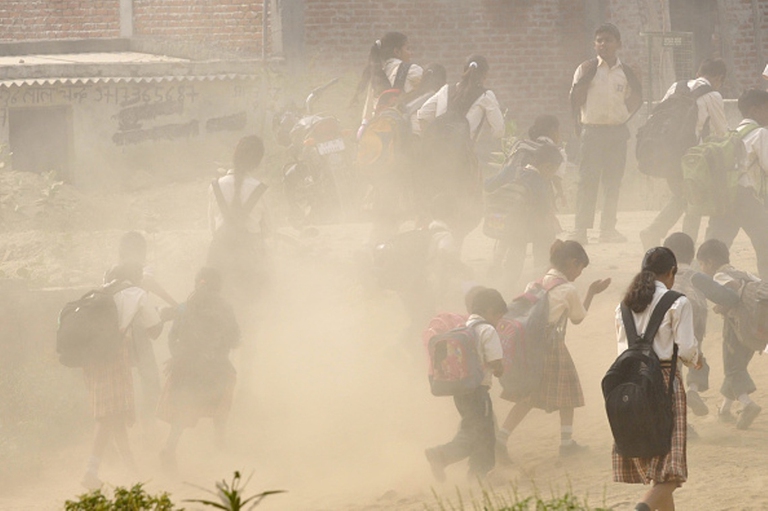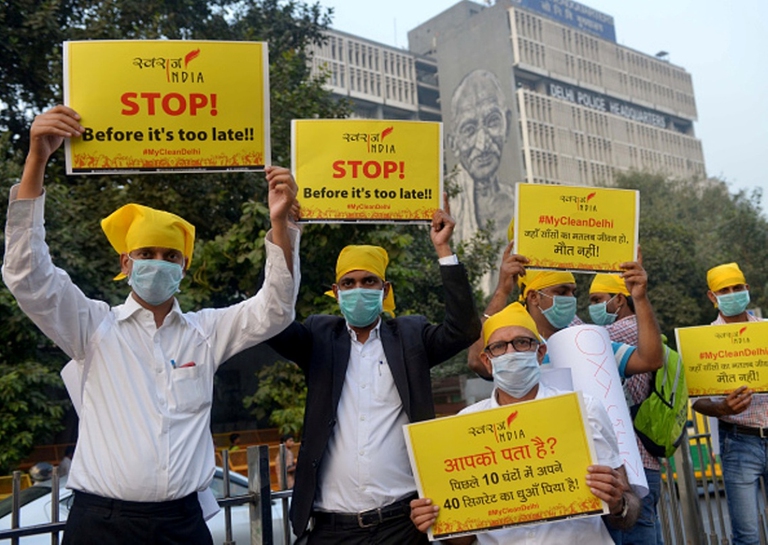
Sharon Lavigne, one of the six winners of the 2021 Goldman Environmental Prize, is fighting to protect her community from plastics corporations.
Terrorism has drawn global attention and most countries have joined the effort to contrast it. But the international community is yet to wage a war against air pollution despite the enormity of the hazard it poses for global health. In India, for example, terrorism has taken 65,900 human lives between 1994 and 2017, which is almost half of deaths caused by air pollution in
Terrorism has drawn global attention and most countries have joined the effort to contrast it. But the international community is yet to wage a war against air pollution despite the enormity of the hazard it poses for global health. In India, for example, terrorism has taken 65,900 human lives between 1994 and 2017, which is almost half of deaths caused by air pollution in a single year.
92 per cent of the world’s population lives in areas where fine particle levels exceed the World Health Organisation’s (WHO) air quality guidelines, according to the report State of Global Air 2017. Worldwide an estimated 6.5 million deaths (11.6 per cent of the total) were associated with indoor and outdoor air pollution in 2012, according to the WHO.
China and India together accounted for 52 per cent of global deaths attributable to hazardous particulate matter (PM) in the air. Whilst the number of deaths in India has risen 24 per cent over the past decade, the situation has improved in China with a 3 per cent drop since 2005, a Greenpeace analysis estimates.
India has witnessed economic growth, the rapid expansion of cities, industrialisation and fast-paced development of infrastructure since liberalisation during the 1990s. With this the scale of air pollution has increased too making it a major health hazard and killer of people surpassing the number of casualties caused by terrorism.
An estimated 1.2 million people died from the effects of air pollution in 2015 in the country due to ambient particulate matter pollution, according to Global Burden of Diseases. Reports find that the country has recorded a nearly 50 per cent increase in early deaths linked to fine airborne particles between 1990 and 2015. Pollution levels in the country have been rising at an alarming rate. Coal consumption almost doubled and oil consumption increased by 60 per cent from 2005 to 2015.
Read more: Living close to major roads may increase risk of dementia
“A poisonous mixture of smoke, fog, air and other chemicals form ‘smog’ and cause the havoc that we saw in Delhi post-Diwali festival last year,” says Doctor Viyatprajna Acharya, biochemistry professor at Bhubaneswar-based SUM Hospital, commenting on the consequences of the use of firecrackers during the festivities. Yet the problem of deadly air pollution isn’t restricted to the capital region or the country’s metropolitan cities. It has become national in entity, costing the economy an estimated 3 per cent of GDP says a recent report on air quality in Indian cities.
In addition, “young adults exposed to passive smoking for a minimum of two years showed signs of oxidative stress and subtle changes in their lipid profile, placing themselves at higher risk of cardiovascular disorders or even cancer due to mutagenesis at their genetic level,” says Doctor Acharya based on the findings of her research on the effects of passive smoking.
In order to address the issue of air pollution India constituted a Steering Committee in 2014 whose members include health sector workers and those in non-health sectors such as renewable energy, petroleum and natural gas, rural development, as well as development partners such as the WHO.
Though more than 200 cities and towns are included in the government-run air quality monitoring network, “measurements in most are only taken twice a week and aren’t available in realtime,” Greenpeace points out. “Lack of realtime monitoring means inhabitants can’t check current pollution levels to protect themselves, and the government is unable to issue public warnings”.
Given its gravity and the number of annual casualties tackling air pollution must be a priority for the government and the approach to deal with it needs to be focused as well as holistic.
Siamo anche su WhatsApp. Segui il canale ufficiale LifeGate per restare aggiornata, aggiornato sulle ultime notizie e sulle nostre attività.
![]()
Quest'opera è distribuita con Licenza Creative Commons Attribuzione - Non commerciale - Non opere derivate 4.0 Internazionale.
Sharon Lavigne, one of the six winners of the 2021 Goldman Environmental Prize, is fighting to protect her community from plastics corporations.
Plastic pollution is airborne too. Microplastics are being carried across continents by the wind, as a recent study reveals.
Levels of particulates in New Delhi in 2020 were once again far above safety thresholds, with extremely serious health consequences for its citizens.
A major oil spill in the Ecuadorian Amazon in April has left the Coca River polluted. The indigenous Kichwa are suing the companies whose pipelines broke.
Molecules that eat up plastic waste, including PET bottles, may soon become widely used as scientists leap ahead in developing new super enzymes.
In Italy’s Land of Fires between Naples and Caserta, activists like Carmen Medaglia are fighting to promote new ways of managing waste.
Toxic substances in Kamchatka’s waters have killed 95% of marine fauna and caused health problems for surfers. The causes, however, are still unknown.
A Magellanic penguin was found lifeless on a Brazilian beach: in its stomach, an N95 face mask. Researchers believe the animal died from ingesting it.
The drop in air pollution during worldwide lockdowns helped prevent thousands of premature deaths. But the situation is returning to pre-crisis levels.










